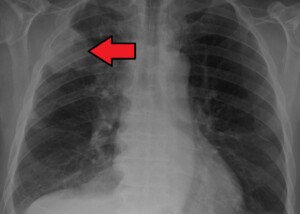
Just how likely can birth control pills cause blood clots in smoking women?
You keep hearing about the risk of blood clots in smoking women who use birth control.
So here is more detailed information on that blood clot risk, that all smoking women on birth control should pay attention to.
I asked Randy Fink, MD, Director of the Center of Excellence for Obstetrics & Gynecology in Miami, FL, to address the likelihood of a blood clot to form in a woman on birth control who also smokes.
That’s significant, and how does this blood clot risk compare to nonsmoking women who are on birth control?
Dr. Fink continues: “Smoking alone increases the risk for thromboembolic events, and has a synergistic effect with hormonal contraceptives.
“Of note, obesity further increases this risk (both with smoking alone, with birth control alone, and with smokers on birth control).
“At this moment, I can’t find a study that did a head to head comparison on blood clot rate in smokers versus non-smokers.” This isn’t to say that no such comparison exists in medical literature.
“Nevertheless, a smoking woman need not even see a head to head comparison to understand how dangerous it is to puff away while on birth control,” says Dr. Fink.
“The other concern in smokers is that of heart attack or stroke,” continues Dr. Fink.
“The incidence varies with age. For instance, smokers who do not use birth control pills have the following absolute risks for heart attack: 1.083 per one million woman-years for women ages 20 to 24; 13.58 for women ages 30 to 34; and 170 per one million woman-years for women ages 40 to 44.
“Corresponding risks for smokers who use combined hormonal contraception are: 1.6 per one million women-years for ages 20 to 24; 20 per million woman-years for those ages 30 to 34; and 255.3 per one million woman-years for women ages 40 to 44.”
What is a woman-year?
“This is a statistical way to represent a relatively infrequent occurrence. I stated that the incidence is 5-10 per 100,000 woman-years in nonsmokers.
“It means that for every 100,000 women who are at risk (i.e., and here, the risk is simply being female, age 15-44), 5-10 will have the event occur by the end of a year.
“You can extrapolate that to say that 0.005% of the at-risk population will have the event per year.
“Compared to 100,000 women on birth control, 20-30 will have a thromboembolic event in a year. Extrapolated, a blood clot will occur in 0.02% of women on birth control.”
How much of an impact would a lot of exercise have in lowering a smoking woman’s risk of blood clot who’s on birth control?
“I cannot quantify this, as I am not aware it has been studied,” says Dr. Fink.
“It stands to reason that exercise improves cardiovascular function and results in weight loss, both of which may decrease the risk of a thromboembolic event.
“The question is whether this benefit offsets the effect of smoking.
“While it might a little, to stop smoking is clearly the better choice,” especially for women on birth control.



























